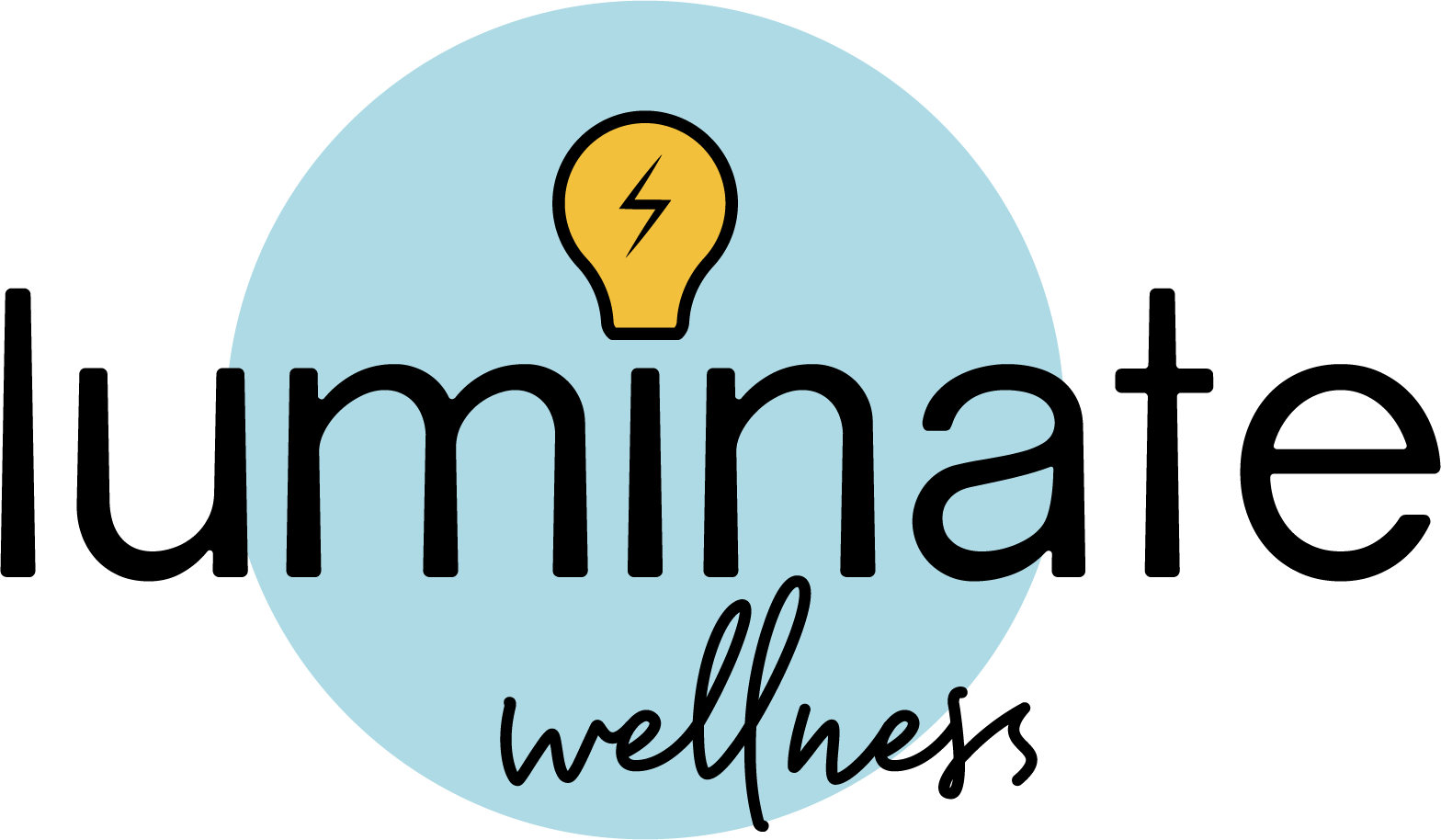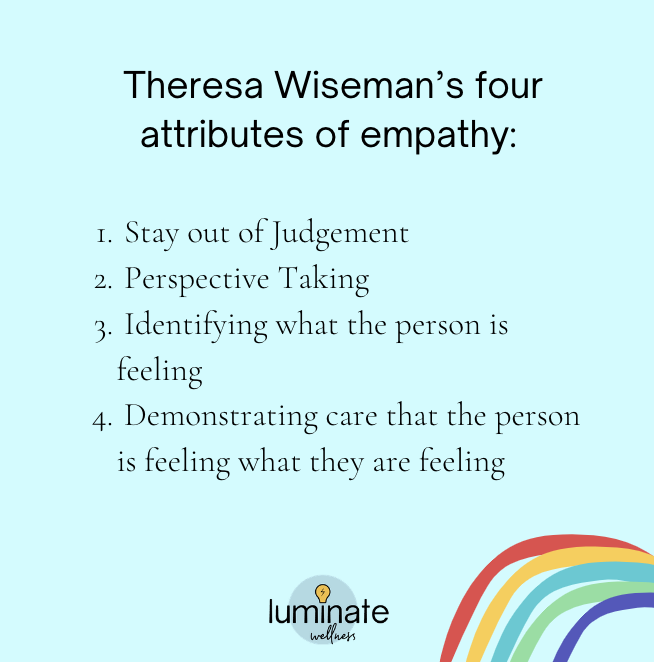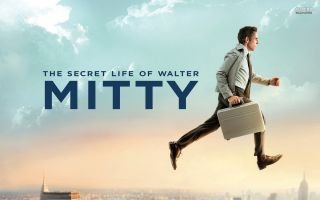How Does Visual Storytelling Support Empathy?
Understanding how we experience empathy by sharing stories is very practical to know about throughout one’s life. I feel a definition of empathy is needed to grasp the content ahead. The following is Theresa Wiseman’s definition of the four attributes of empathy:
“Stay out of Judgement”
“Perspective Taking”
“Identifying what the person is feeling”
“Demonstrating care that the person is feeling what they are feeling”
To me, this means that judgment must be set aside for empathy to exist because it is an imposition of your personal experience and beliefs on the other person, blinding you to their authentic experience. “Perspective taking" is also about letting go of your personal view and seeing the situation through someone else's eyes. There is no expectation that you will assimilate into that person’s worldview because of this, but it's important to acknowledge the beliefs and experiences of others. Recognizing the emotions occurring in the individual when they encounter or relay events is also necessary because it can connect you to times you’ve experienced those feelings. Theresa Wiseman stresses that empathy is not about mending a wound or inserting yourself in any way; it’s about listening. This concept is very applicable to real-life situations as well as fictional ones.
Movies and TV are the most accessible forms of storytelling currently due to available technology and how easy they are to consume. People tend to consume entertainment to fill time or avoid boredom, but visual storytelling holds much potential for building empathy and connection. Sure, there is no harm in watching out of boredom every so often, but it becomes problematic when it is the only way you consume content. How a person watches something is much more important than what they watch. If they choose to experience a story to understand the thoughts, experiences and emotions of somebody else, then they can practice empathy. Although these stories are fictional, hopefully, they are authentic enough to provide the pathway for real-life connection and empathy.
This is a short personal example: In 2013, a movie called “The Secret Life of Walter Mitty” came out, which was starred in and directed by Ben Stiller. I watched it over and over and over again from ages 6-8. I loved this story because it blended extremely vivid, fantastical daydreams with the character's mundane, real-life office job. Those bizarre sequences experienced by the main character throughout the movie made reality more tolerable; for the viewer and Walter Mitty himself. The illusion experienced by his character is what drives him to break a pattern that is no longer working for him. As the movie progresses and his life becomes more like the versions of himself he dreams about, he realizes that he was always capable of change. This movie interested me in things I would have found totally uninteresting otherwise. I connected to his character and comprehend his struggles and motivation which was a really big thing for me, especially at that age. This movie is still one of my favourites today.
Learning is often used as a synonym for knowledge and sure, acquiring knowledge is a valued part of learning, but they are not the same thing. This sometimes can limit the need for curiosity in and outside an academic space, even if the person does not realize it.
Curiosity is essential to practicing empathy.
Asking questions provides insight into the lives of others, helping you understand their perspective. There is no objective truth in any social situation because every person's worldview is shaped by how they were raised, their age, what they have or had access to, and their relationships with others. When this is ignored, we can become very stubborn and judgemental because we use our experience and thoughts as the template for validity.
No person is entirely good or bad, right or wrong; but most of us tend to categorize people in that limiting way.
People can do “good” or “bad” things, but it is not helpful to confine them to those things because this suggests they are either untouchable or irredeemable. Of course, this should never be used to dismiss the wrongdoings of others but to push them to overcome them instead of living in their mistakes because they have been told that they are strictly wrong, implying that they have no capacity for change. Not making those often unsound conclusions allows you to understand others in complex ways with empathy. Watching film or tv can help deconstruct judgments or implicit bias and begin showing empathy towards fictional characters and real people.
This is a definition of implicit bias from the Perception Institute: “Thoughts and feelings are “implicit” if we are unaware of them or mistaken about their nature. We have a bias when, rather than being neutral, we have a preference for (or aversion to) a person or group of people.”
I believe that storytelling, in film or otherwise, has been proven to create insight and empathy in the viewers.
To quote the academic journal, “Empathy, Film and the Brain”:
“Our brains are directly wired to resonate with other people’s feelings, and the film experience directly taps into the way our brains are wired and enable us to be ‘ultra-social.’”
Ultrasociality refers to the capability of collaboration between large “...numbers… of genetically unrelated individuals'' (“ultrasociality [DokuWiki]”). The purpose of this talk is to get you to think about how you interact with people, how you consume content, and most importantly, how you practice empathy.
Please remember that though assumptions, judgments and biases come with being human, judging others does not create understanding or connection. Judgment will always be there because it’s a natural mechanism that is very useful in decision-making—it is supposed to be there. I believe that if everybody watched movies and TV to intentionally build empathy, as well as watching for sheer entertainment, we would have more appreciation for others' experiences and therefore get along better as a collective.
Jenn’s note about The Secret Life of Walter Mitty:
I watched this film right when I was contemplating going back to my job after my maternity leave, or starting my own business as a trainer/writer/consultant. Risk was not something I have ever enjoyed…I had been working for the same organization for 20 years and I was comfortable there. I wasn’t content, but I was comfortable, especially since I was the primary income earner at the time. I am cautious by nature, but I also knew that there was more for me. I worried that I might die a little bit every day if I had to go back to the monotony of a job where I had already reached the maximum growth possible. I felt like I was becoming a shadow of myself. I also didn’t feel inspired to strive for any other jobs within the organization.
When I watched this movie I was stuck in limbo trying to decide what to do, even though in retrospect the answer was very clear. I was just scared–more like terrified.
But Walter Mitty inspired me. I saw a lot of myself in him, and I wanted more. With so much fear and trepidation he took a jump into adventure and uncertainty. I knew that I also needed to jump. Though I have had many bumps along the way, I have zero regrets. Quitting my job and choosing adventure and uncertainty was one of the best decisions I have ever made.
If you’ve watched this movie, let Sydney and I know what you thought about it!



